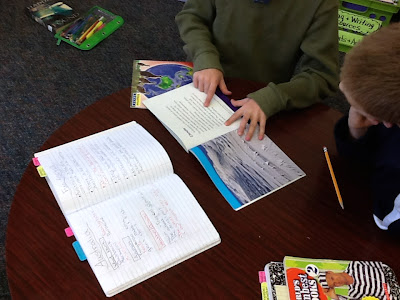This week, we started working on writing summaries for the nonfiction articles we are reading. I think it is always important for students to know and understand the purpose for WHY they are doing something so our first minilesson started with turning and talking about what they think of when they hear the word summary and why they think we write summaries. I recorded their responses on the anchor chart below. I also think it is important for teachers to write and model their own writing for students so I wrote a few summaries so I was ready to model the process for the students and share my own writing work with them.
On our class chart, we also marked the parts with different colored post-its (yes, I love to color code like my students - I wonder where they get it from?) Then students had a turn to practice writing their own summaries for another article and used my summary as a mentor. They mimicked the process I went through by annotating their text to identify main ideas and star/underline important details. They used their annotated text to write their own summary.
Students are enjoying summary writing and comparing their summaries with their writing partners to see if they have similar main ideas and important details. They are also learning from one another and now using their classmates' summaries as mentors instead of only mine. We started a bulletin board yesterday to display our chart and summary examples that students are proud of and that can be used as mentors for classmates.
Today we started writing summaries with two main ideas so stay tuned to hear more about that! :)







































